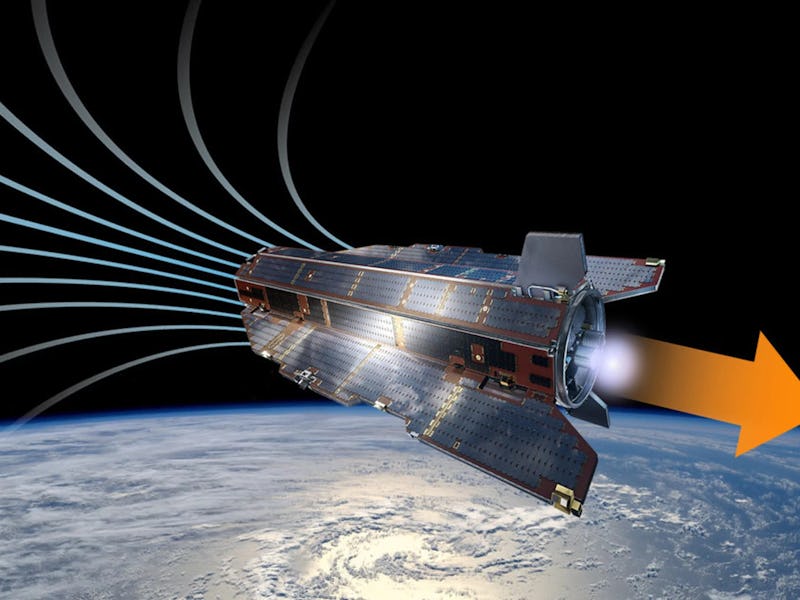Mars Travel Could Get Easier Thanks to a New Air-Breathing Thruster
It sucks in space air.

Traveling to Mars presents a lot of challenges. Money is by far the biggest, but right behind it is fuel. It takes a ton of propellant to get into space, let alone travel to the nearest planet. That issue, however, may finally be resolved thanks to new technology.
The European Space Agency (ESA) tested a thruster that uses molecules in space to fuel it. This air-breathing ion thruster could allow for a satellite to orbit the red planet without the need of additional propellant, such as xenon. It works by skimming molecules from space and then compressing them to form plasma. Then an electric field would accelerate the plasma thus propelling the satellite.
The first air-breathing ion thruster.
“This design of the collector was challenging because the air molecules tend to bounce out again, rather than be retained and compressed to a point where they turn into plasma, capable of being accelerated with an electric field,” Louis Walpot, leader of the project at ESA, told Space.com. “The collector-plus-thruster design is entirely passive in nature — the air enters the collector due to the spacecraft’s velocity as it orbits around Earth. All it needs is electric power to ionize the compressed air.”
Work on the project started in 2015 with the ESA funding the collaboration of Polish Firm QuinteScience and Italy’s Sitael. Testing for the thruster was done in a vacuum chamber located in Italy. The chamber simulated the surroundings at 120 miles above Earth. At that distance, the thruster would suck in nitrogen and oxygen molecules, but would work differently in Mars’ orbit, where it would gather carbon dioxide molecules at approximately 75-85 miles from the planet’s surface.
The next step for the project is to improve the technology and begin working on a more realistic flight configuration. Walpot said they will start looking at potential applications for the technology.
Earlier this month, Elon Musk said SpaceX planned to test their Mars spaceship in the first half of 2019. Now, he may have a tool to make the trip to Mars sooner than expected.